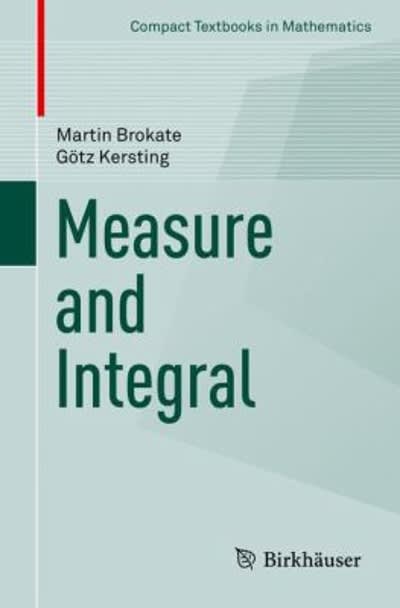Question
Public opinion polls are taken on a wide range of topics, but polls are known to have a margin of error. In particular the Gallup
Public opinion polls are taken on a wide range of topics, but polls are known to have a margin of error. In particular the Gallup organization states Results are based on telephone interviews with 1,000 national adults, aged 18 and older .... For results based on the total sample of national adults, one can say with 95% confidence that the maximum margin of sampling error is 3 percentage points. In addition to sampling error, question wording and practical difficulties in conducting surveys can introduce error or bias into the findings of public opinion polls. In this exercise we will use Monte Carlo simulation to investigate these claims. Assume that the probability that a randomly selected individual supports a position with 50% probability. Set up a simulated poll by generating Binomial random variable with 1000 trials and a probability of 50%. (Recall that a Binomial random variable measures the probability of a number of successes in a fixed number of trials.) Calculate the proportion supporting position 1 by taking the resulting successes divided by the trials. Now calculate the sampling error as the difference between the observed proportion and the true proportion of 50%. Now do the following: Use Analytic Solver to simulate this poll 2,500 times. Report the mean and standard deviation of the proportion supporting 1 Report the mean and the standard deviation of the error Generate a histogram of the error. Calculate a 95% confidence interval for the error. (Hint: to calculate the 95% CI for the error, find the 2.5th percentile and the 97.5th percentile using the percentile functions.) Calculate the Margin of Error for the 95% Confidence Interval (i.e. half the difference between the 2.5th and 97.5th percentile.) Generate a Sensitivity Analysis Graph that shows Margin of Error as a function of the true proportion, varying the true proportion from 10% to 90% for a poll with 1000 respondents. (Hint: use PsiSimParm to define your sensitivity parameter.) Make sure to properly label your graph. Generate a Sensitivity Analysis graph that shows Margin of Error as a function of the number of respondents, varying the true number of respondents from 100 to 2,000 for a poll with a true probability of 50%. Make sure to properly label your graph.
Excel File:
Trials 1000
Prob 50%
Sensitivity 1 - True Proportion Sensitivity 2 - Poll Size Number supporting A Low 10% Low 100
Prop Supporting A High 90% High 2000
Error
Avg Error
2.5 Percentile
97.5 th Percentile
MOE
Excel File: https://drive.google.com/file/d/1NeIWcZVfH_yucGJiUe1z0GLbKq8kqkQv/view?usp=sharing
Step by Step Solution
There are 3 Steps involved in it
Step: 1

Get Instant Access to Expert-Tailored Solutions
See step-by-step solutions with expert insights and AI powered tools for academic success
Step: 2

Step: 3

Ace Your Homework with AI
Get the answers you need in no time with our AI-driven, step-by-step assistance
Get Started


